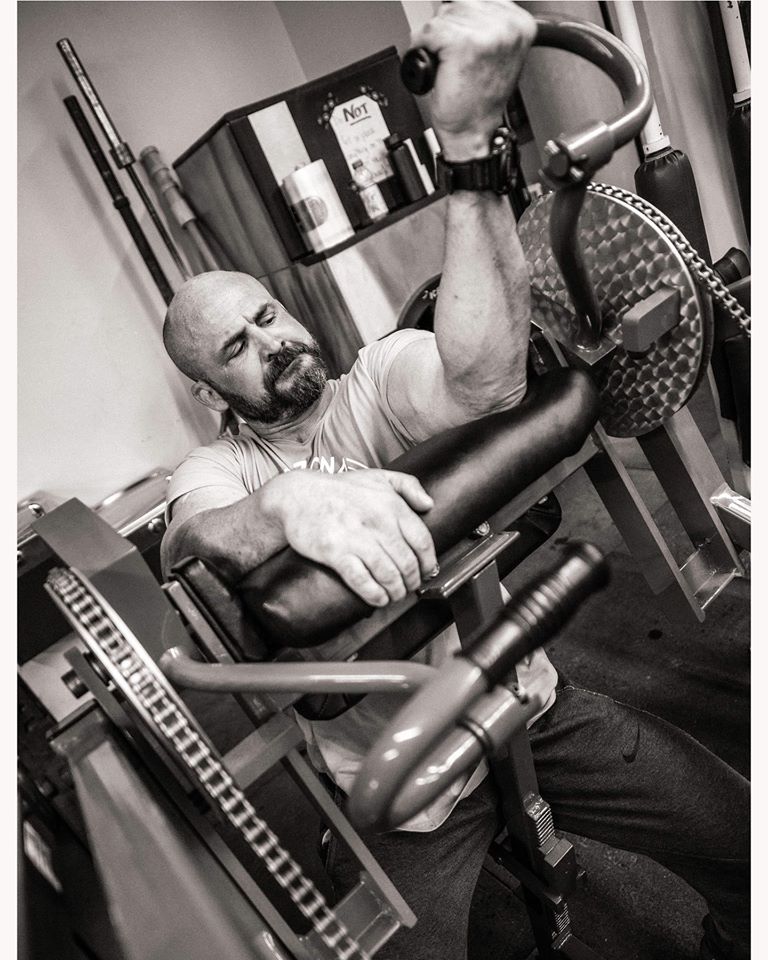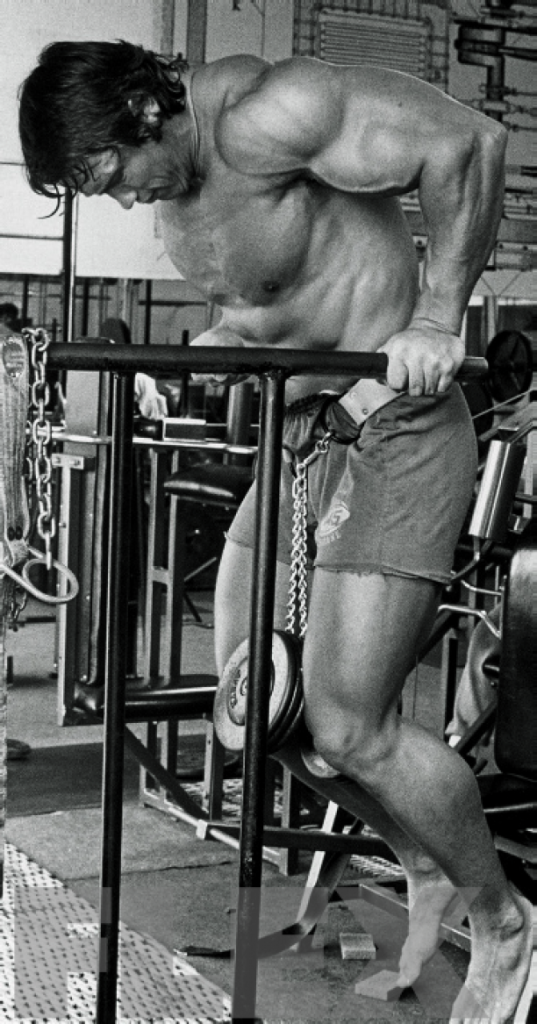In the most basic terms, Hypertrophy refers to an increase in the size of a…

Programming through Auto-regulation
For the purposes of this article, auto-regulation refers to adjusting each training session based on the athlete’s capacity that day. There are multiple ways to implement auto-regulation. This article covers the method of simply programming a “Heavy Set” at a prescribed number of reps.
There are several advantages to programming in this manner:
- You can prescribe the desired loading without testing your athlete’s 1RM.
- It allows for significant flexibility in training load based on how the athlete is feeling and performing that day.
- It can be used for a group of athletes with widely varied training histories. Athletes who are ready to make quick progress are not restrained by prescribed loads and athletes who are struggling are not forced to use excessive loads.
It is imperative that the coach provides detailed guidance for the athletes in terms of what the “Heavy Set” should look like. The following are a set of parameters that I find useful for describing the “Heavy Set”:
- The movement needs to be clean and smooth.
- There should be no hitching, grinding, or uneven movement.
- Never sacrifice positions for the sake of moving weight.
- Do not push to failure. (Leave a rep in the tank.)
Terminology
Intensity: refers to the peak or highest intensity work. For our purposes, intensity can be defined as percentage of 1RM.
Volume: refers to the total Sets x Reps x Load. This is a means of expressing the total of work completed. Volume is an important component of training and should always be a primary consideration. Progressively building volume and intensity must be managed because the body requires time to adapt to increased demands.
Sets and Reps Depend on Purpose
Sets and reps will look very different for Weightlifting as compared to Powerlifting or Bodybuilding. The Weightlifting movements are bigger, more complex and metabolically taxing, when compared to the movements of other strength sports. Due to the differences between lifts and training objectives, the appropriate number of reps will vary. Generally, when training the competition lifts for Weightlifting, sets will rarely exceed three reps.
Three Methods for Implementing Auto-regulation into a Strength Program
Method 1: Build to a Heavy Set
If the intent is to build work capacity and a foundation for strength, it is important that the athlete complete several working sets prior to the “Heavy Set.” Athletes should be instructed to make consistent increases in weight and perform the prescribed number of reps for all sets.
Example:
Back Squat
Build to a Heavy Set of 8
(Make consistent increases. All sets are 8 reps)
This is an example of “Straight Sets Building.” In other words, all sets are completed at the same number of reps (in this case 8), and the weight increases with each set.
In a situation where you want to control the number of sets completed, instructions can be written in the following manner:
For load:
Back Squat 8-8-8-8-8
(make consistent increases)
An athlete that has a 300lbs 1RM, may use a progression like this:
Back Squat
1×8 (195lbs)
1×8 (210lbs)
1×8 (225lbs)
1×8 (240lbs)
(correlating percentages of 1RM are as follows: 65%, 70%, 75%, 80%)
This is a common method of conditioning athletes for future work and building a foundation for future strength development. The sets preceding the “Heavy Set” will (due to fatigue) limit to some extent the remaining work capacity at the time of the “Heavy Set.”
Method 2: Build to a Heavy Set in as Efficient a Manner as Possible
The primary focus of this approach is the “Heavy Set.” Energy is conserved by limiting the number of sets and reps preceding the “Heavy Set.”
Back Squat
Build to a Heavy Set of 8
(in as efficient a manner as possible)
In the case that the athlete has a 300lbs 1RM, the set progression may look like this:
Back Squat
1×3 (195lbs)
1×3 (210lbs)
2×1 (225lbs)
1×8 (240lbs)
(the correlating percentages of 1RM are as follows: 65%, 70%, 75%, 80%)
This structure allows for the majority of energy to be focused on the “Heavy Set.” It tends to be less effective for building work capacity and is more effective for peaking or testing.
Method 3: Back Loading the Volume
Back Loading the Volume (most of it) refers to a structure in which the athlete builds to the “Heavy Set” in as efficient a manner as possible. Once the “Heavy Set” has been completed, intensity is reduced and multiple sets are completed. This allows the athlete to accumulate additional volume, practice skill, or develop power without compromising the “Heavy Set.”
In order to provide a more accurate understanding of intensities, I will include a table illustrating the relationships between percentages of “Rep Max Lifts” verses percentages of “1 Rep Max Lifts.”
Back Squat
Work to a heavy set of 8 (Intensity Set)
90% of heavy set: 2×8 (Volume Sets)
Hypothetical Scenario
In the case that the “Heavy Set” of 8 was completed at 300lbs, the Volume Sets would be completed with 270lbs.
Approximate Percentage of 1RM
A “Heavy Set” of 8 should be approximately 80% of 1RM. There is room for significant variation, but we’ll go with it for the purposes of this example.
Predicted Number of Reps Completed at Given Percentage of 1RM
100% of 1RM x 1 Rep
95% of 1RM x 2 Reps
90% of 1RM x 3 Reps
85% of 1RM x 5 Reps
80% of 1RM x 8 Reps
75% of 1RM x 10 Reps
70% of 1RM x 12 Reps
65% of 1RM x 15 Reps
60% of 1RM x 20 Reps
*Exact numbers will vary based on training history, level of fatigue, and genetic predisposition. Still, these figures are useful for approximating the appropriate set, rep, and intensity prescription.
Approximate 1RM
In a scenario where 300lbs is 80% of 1RM, the 1RM is approximately 375lbs.
Volume Sets as a Percentage of Approximate 1RM
The “Volume Sets” are completed at 90% of the “Heavy Set.” The heavy set was 300lbs, thus the “Volume Sets” were completed at 270lb or approximately 72% of 1RM.
(90% of the “Heavy Set” of 8 or 72% of 1RM)
It is important to understand how percentages are prescribed for the “Volume Sets.”
The intensities for these sets are based on the “Heavy Set.” Because the “Heavy Set” isn’t a “Max Effort” set and is typically more than a single rep, it may be more difficult to estimate prescribed percentages when starting out with this programming method.
In time, the coach will develop an intuitive understanding of the relationships between the “Heavy Set” and the “Volume Sets.” Until this time, it is important that the coach calculate these ratios. This will ensure that the coach is prescribing the intended intensities and will help develop deep understanding of the relationship between intensities.
Percentages of Rep Maxes as compared to 1 Rep Max:
8RM as a Percentage of 1RM
80% of 8RM = 64% of 1RM
85% of 8RM = 68% of 1RM
90% of 8RM = 72% of 1RM
95% of 8RM = 76% of 1RM
5RM as a Percentage of 1RM
80% of 5RM = 68% of 1RM
85% of 5RM = 72% of 1RM
90% of 5RM = 76% of 1RM
95% of 5RM = 81% of 1RM
3RM as a Percentage of 1RM
80% of 3RM = 72% of 1RM
85% of 3RM = 76% of 1RM
90% of 3RM = 81% of 1RM
95% of 3RM = 86% of 1RM
2RM as a Percentage of 1RM
80% of 2RM = 76% of 1RM
85% of 2RM = 81% of 1RM
90% of 2RM = 86% of 1RM
95% of 2RM = 90% of 1RM
*This table can be helpful because percentage of 1RM is commonly used to calculate programming.
Additional Samples of Back Load Structure
Power Development
Back Squat
Build to a heavy set of 2
80% of heavy set: 3×2 (approximately 76% of 1RM)
70% of heavy set: 3×2 (approximately 67% of 1RM)
Deadlift
Build to a heavy set of 1 (in as efficient a manner as possible)
70% of heavy set: 10×1 (every :30)
*Note that the intensities are lower when training for power. In order to train for power, you must move the bar fast. Too much weight slows the bar and disrupts the power output. The volume sets are performed within an effective range for training power.
______________________
Strength Development
Back Squat
Build to a heavy set of 1
85% of heavy set: 5×1
(Because the athlete works to a “Heavy Set” of 1, there is no need to convert the percentages to account for reps.)
Back Squat
Build to a heavy set of 2
90% of heavy set: 2×2 (86% of 1RM)
80% of heavy set: 2×3 (76% of 1RM)
______________________
Work Capacity Development
Back Squat
Build to a heavy set of 2
90% of heavy set: 1.1.1.1.1 (rest :45 between reps)
80% of heavy set: 1.1.1.1.1 (rest :30 between reps)
70% of heavy set: 1.1.1.1.1 (rest :15 between reps)
(rest as needed between the work at different intensities)
Back Squat
Build to a heavy set of 8.
90% of heavy set: 3×8 (72% of 1RM)
Power Clean
Build to a heavy set of 1
90% of heavy set: AMRAP 7:00
Prescribing strength training in this manner can be an effective means of programming for large groups with varied levels of experience and preparation. It also allows the coach and athlete to adjust intensity according to the athlete’s current physical and mental preparedness. Auto Regulating can be particularly useful during transitional periods where you may not have an accurate picture of an athletes’ maxes. The flexibility can also serve as a nice break from prescribed loads


